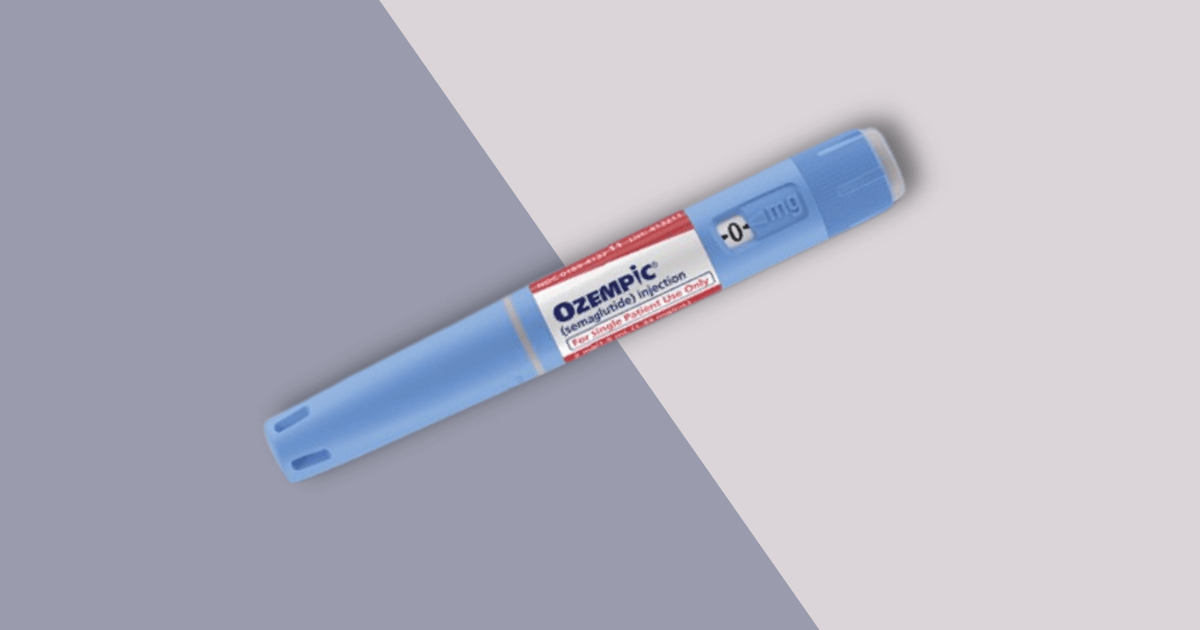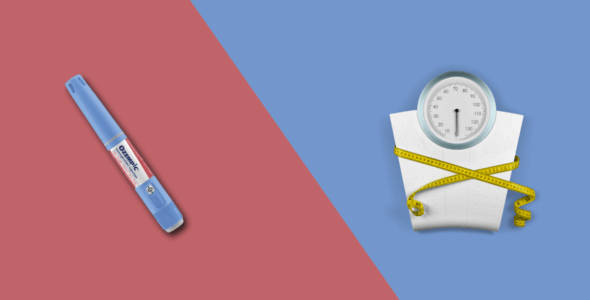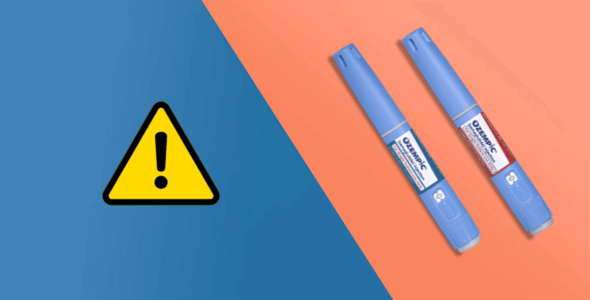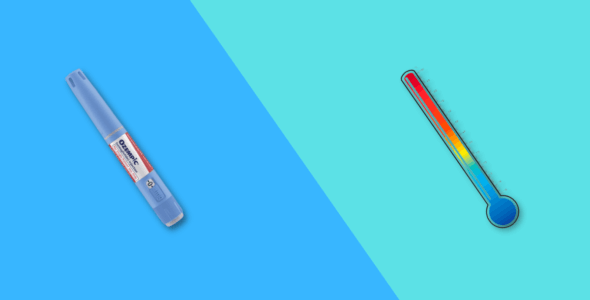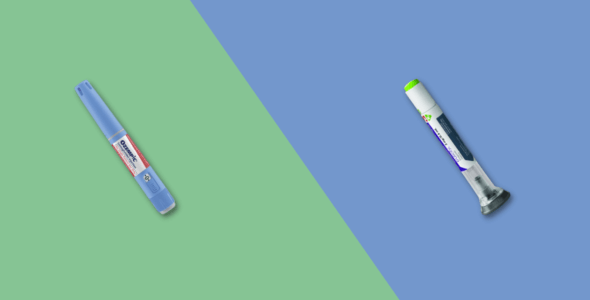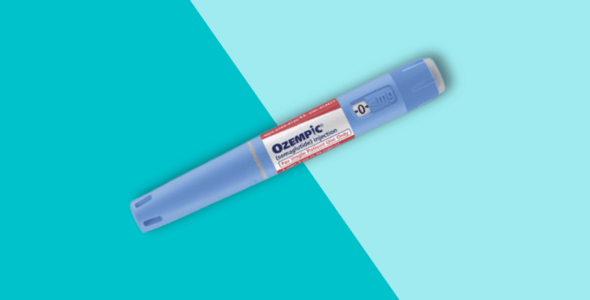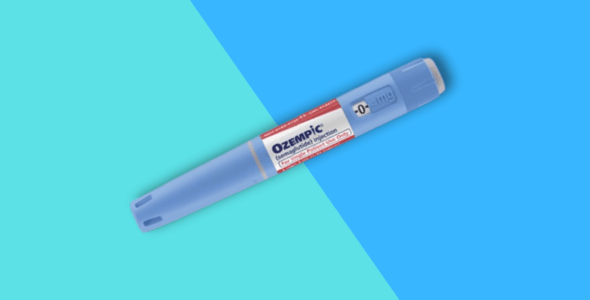Is Ozempic insulin?
Table of contents
- What is Ozempic (semaglutide)?
- What type of insulin is Ozempic?
- Is Ozempic the same as insulin?
- What is the difference between Ozempic and insulin?
- How do GLP-1 antagonist drugs work and what is the mechanism of action?
- What is Ozempic used for?
- How does Ozempic work?
- What are the most commonly prescribed doses of Ozempic?
- How do I take Ozempic?
- What are the side effects of Ozempic?
- Does Ozempic replace insulin?
- What is the difference between basal insulin and bolus insulin?
- Is it possible to take too much Ozempic?
- How does Ozempic work for weight loss?
- How long do you stay on Ozempic for?
- Is Ozempic a stimulant?
- What is the difference between Ozempic and RHI?
- How do I know if I need to take Ozempic?
- Are there any foods or medications you should avoid while on Ozempic?
- Can you take Ozempic and insulin together?
- Which medications can be taken with Ozempic?
- What warnings are there with Ozempic?
- Is Ozempic better than Victoza?
- What is the difference between Ozempic and Wegovy?
Insulin is a hormone normally produced by your pancreas to help with glycemic control. If your pancreas doesn’t produce any insulin (Type 1 diabetes), or if your body is unable to use the insulin produced properly, (Type 2 diabetes) this can result in high blood glucose levels and serious problems for your health. Treatments for Type 2 diabetes either improve insulin secretion or improve the body’s use of the insulin produced.
Ozempic is a non-insulin medication used to treat people with Type 2 diabetes mellitus. In this article, we will take a closer look at what Ozempic is, how Ozempic works, how you take Ozempic, its side effects and other useful information you should know when using it.
What is Ozempic (semaglutide)?
Ozempic is the brand name for a diabetes medication used with diet and exercise to treat type 2 diabetes in adults. Ozempic contains semaglutide as the active ingredient. It belongs to a class of drugs known as GLP-1 receptor agonists (glucagon-like peptide 1) and is used to improve blood sugar control.
RELATED: What is Ozempic
What type of insulin is Ozempic?
Ozempic is not an insulin of any type. Ozempic belongs to a class of drugs called antidiabetics, glucagon-like peptide-1 agonists (GLP-1 agonists). Other GLP-1 agonist drugs include Trulicity (dulaglutide), Byetta (exenatide), Bydureon (exenatide) and Victoza (liraglutide).
Is Ozempic the same as insulin?
Ozempic is not the same as insulin. Ozempic is the brand name for semaglutide once-weekly injections. Ozempic is also available as an oral medication version with the same active ingredient, semaglutide, under the brand name Rybelsus.
RELATED: Rybelsus for weight loss: does it work?
What is the difference between Ozempic and insulin?
Ozempic is classified as a GLP-1 agonist drug which is different than insulin. GLP-1 drugs contain a small protein that is similar to insulin (called a peptide). As proteins are easily broken down by stomach acids, which results in making the protein inactive, both Ozempic and insulin need to be injected under the skin to enable the drug to enter the body and bypass the gut.
How do GLP-1 antagonist drugs work and what is the mechanism of action?
GLP-1 acts in several different ways that help improve control of blood sugar levels, these include:
- Stimulating the pancreas to release insulin. If your blood glucose level is already low, insulin is not released by the pancreas, preventing GLP-1 drugs from causing hypoglycaemia.
- Reducing the production of glucose by your liver. Normally, the liver would release glucose when your blood glucose levels are low and store glucose when blood glucose levels are high. In Type 2 diabetes, this process does not function as it should. Instead the liver continuously produces glucose causing high blood glucose levels.
- GLP-1 slows the rate of gastric emptying (the movement of food from your stomach into your small intestines). This causes you to feel full quicker and helps to reduce your appetite. Because the rate of movement is slowed, the rate at which nutrients (such as glucose) are absorbed into your blood stream is also slowed. This may have a combined effect of reducing your food intake.
What is Ozempic used for?
Ozempic is a prescription drug manufactured by Novo Nordisk. It is approved by the US Food and Drug Administration (FDA) to:
- Lower blood sugar levels in combination with diet and exercise in patients with type 2 diabetes. It has not been studied in patients with pancreatitis and it is not indicated for use in type 1 diabetes mellitus or diabetic ketoacidosis
- To reduce the risk of major adverse cardiovascular events (heart attack and stroke) in adults with type 2 diabetes mellitus and established heart disease
- Ozempic is also the first FDA-approved medication for use in patients with obesity even if they do not have type 2 diabetes
How does Ozempic work?
Semaglutide, the active ingredient in Ozempic binds and activates GLP-1 receptors, helping to lower your blood glucose levels by stimulating insulin secretion from your pancreas and reducing glucagon secretion. So when your blood glucose level is high, your body will release more insulin and less glucagon. Ozempic also slightly delays the time it takes your food to empty out of your stomach immediately after eating (gastric emptying), reducing the rate at which glucose enters into your bloodstream.
What are the most commonly prescribed doses of Ozempic?
Ozempic is available in injection form, in the following doses: 2mg/1.5ml pre-filled pen (delivering doses of 0.25 mg or 0.5 mg per injection), 4mg/3ml pre-filled pen (delivering 1mg per injection), and 8mg/3ml pre-filled pens (delivering 2mg per injection).
RELATED: Ozempic dosage
How do I take Ozempic?
- Use Ozempic injections exactly as your healthcare provider prescribes it. Inject Ozempic under the skin as a subcutaneous injection into your stomach, thigh, or upper arm
- Use Ozempic at any time of the day on the same day each week. You may change the day of the week you take this medication as long as your last dose was given 2 or more days before
- If you miss a dose of Ozempic, take the missed dose as soon as you remember if it’s within 5 days of the missed dose. If more than 5 days have passed, skip the missed dose and take your next dose on the regularly scheduled day
- Take Ozempic with or without food
- Don’t mix insulin and Ozempic in the same injection. You may inject them both in the same area but not right next to each other
- Rotate injection sites with each injection
- Stay on your diet and exercise program while on Ozempic.
- Discuss how to prevent, recognize and manage low blood sugar (hypoglycemia), and high blood sugar (hyperglycemia) with your healthcare professional
- Do not share your Ozempic pen with other people to reduce your risk of infection
- Store this medication in the refrigerator before its first use. After its first use, you can store it at a controlled room temperature or refrigerate it for 56 days. Keep the pen cap on when not in use. Ozempic should be stored away from heat, direct sunlight, and moisture
- Your doctor may prescribe Ozempic to be used in addition to other diabetes medications, such as metformin or insulin
Other drugs may interact with Ozempic, including prescription drugs and over-the-counter medicines, vitamins, and herbal products. You should read the full prescribing information and the medication guide provided with this medication and tell your healthcare provider about all of your medications including any supplements you are taking.
What are the side effects of Ozempic?
The most common side effects of Ozempic compared to placebo in clinical trials include:
- Injection site reactions
- Nausea
- Vomiting
- Gastrointestinal side effects – diarrhea, abdominal pain, and constipation
- Weight loss
Serious side effects include:
- Increased risk of thyroid cancer
- Pancreatitis
- Diabetic retinopathy complications
- Hypoglycemia when used with insulin secretagogues or insulin
- Acute kidney injury
- Gallbladder disease
- Allergic reactions – symptoms include hives, dizziness, fast heartbeats, trouble breathing, and swelling of your face, lips, tongue, or throat
RELATED: Ozempic side effects and how to avoid them
Does Ozempic replace insulin?
Ozempic does not replace insulin in people with diabetes whose pancreas does not produce insulin. Semaglutide, the active ingredient in Ozempic works by stimulating insulin secretion from your pancreas. Ozempic is only used in people with Type 2 diabetes. Insulin is used to treat people with Type 1 or Type 2 diabetes.
What is the difference between basal insulin and bolus insulin?
Basal insulin is longer-acting insulin that helps to maintain steady glucose levels. Bolus insulin is shorter-acting insulin most often taken before meals. Your treatment with insulin is normally a combination of both shorter and longer-acting insulins.
Is it possible to take too much Ozempic?
Yes, if you take too much Ozempic, your blood sugar level could drop to a low level causing hypoglycemia. Contact your healthcare provider immediately for medical advice if this should happen.
RELATED: What happens if you take too much Ozempic?
How does Ozempic work for weight loss?
Ozempic is designed to act in a similar manner to glucagon-like peptide 1 (GLP-1) in the body. Ozempic is taken 1 to 2 hours after breakfast in the morning which will help to suppress your appetite during the day. Ozempic also slows gastric emptying. This will help to reduce your appetite by making you feel fuller for longer.
RELATED: Ozempic for weight loss
How long do you stay on Ozempic for?
Your starting dose of Ozempic will be 0.25 mg weekly for 4 weeks. This will be increased to 0.5 mg once weekly for a further 4 weeks. If your blood sugar levels are under control you will continue taking 0.5 mg once a week.
Is Ozempic a stimulant?
Ozempic is not a stimulant.
What is the difference between Ozempic and RHI?
RHI stands for short-acting insulin. Insulin is injected at least once a day. Ozempic is a long-acting treatment with a dose of Ozempic given once weekly, and is not considered an RHI.
How do I know if I need to take Ozempic?
Ozempic is used in adults with type 2 diabetes who also have risk factors such as cardiovascular disease or are at high risk of developing cardiovascular disease, kidney disease, or heart failure. Speak to your doctor if you have symptoms of type 2 diabetes such as feeling tired, hunger, frequent urination, increased thirst, problems with your vision, slow wound healing, or yeast infections.
Are there any foods or medications you should avoid while on Ozempic?
While there are no foods you need to specifically avoid while taking Ozempic, you are advised to monitor what you eat and drink and to avoid foods high in fat, sugar, or high in calories.
RELATED: What foods to avoid while taking Ozempic
Can you take Ozempic and insulin together?
You may be at a higher risk of hypoglycemia or severe hypoglycemia if you take Ozempic with an insulin secretagogue (eg, sulfonylurea). Your healthcare provider will monitor you closely for this side effect.
Which medications can be taken with Ozempic?
Your doctor may prescribe Ozempic to be used in addition to other diabetes medications, such as metformin or insulin.
What warnings are there with Ozempic?
- Ozempic may cause new or worsening kidney disease, including kidney failure. Be careful to not become dehydrated while using Ozempic as this could also cause kidney problems
- You may have an allergic reaction to Ozempic. You will have to stop treatment if you have allergic reactions to Ozempic or any of its other ingredients. Tell your doctor if you have previously had an allergic reaction to medications such as Trulicity (dulaglutide) which belongs to the same class of drugs as Ozempic
- Ozempic may make a condition known as diabetic retinopathy worse. Make sure you monitor yourself for any changes in your vision
- Acute and chronic pancreatitis (inflammation of the pancreas) have been reported in clinical studies. Report any symptoms of pancreatitis, including persistent severe stomach pain which sometimes radiates to the back
- Your risk of hypoglycemia (low blood sugar) is increased if Ozempic is used in combination with an insulin secretagogue (sulfonylurea) or insulin. Your dosage of other treatments may need to be adjusted
- Ozempic may cause thyroid C-cell tumors or a type of thyroid cancer called medullary thyroid carcinoma (MTC). See the boxed warning for Ozempic and speak to your healthcare provider if you get swelling in your neck, hoarseness, difficulty swallowing, or shortness of breath. Tell your doctor if you have a family history of MTC, or if you have an endocrine system condition called Multiple Endocrine Neoplasia syndrome type 2
- Tell your doctor if you are pregnant or breastfeeding. Ozempic shouldn’t be used during pregnancy and for at least two months before a planned pregnancy because it is not known if it may affect your unborn child
Is Ozempic better than Victoza?
Ozempic (semaglutide) or Victoza (liraglutide) are both possible treatment options if you have type 2 diabetes. They both belong to the same drug class, glucagon-like peptide-1 (GLP-1) agonists. They also are both given via an injection under the skin. Ozempic is given as a weekly injection while Victoza is injected once a day.
They are both used to help manage blood sugar levels in adults with type 2 diabetes and lower the risk of cardiovascular events in people with type 2 diabetes and heart disease. Victoza can also be used to manage blood sugar levels in children 10 years and older with type 2 diabetes.
RELATED: Ozempic vs Victoza
What is the difference between Ozempic and Wegovy?
While they are both the same generic semaglutide, Ozempic is used to treat type 2 diabetes and Wegovy is used with diet and exercise for chronic weight management in overweight adults who also have at least one weight-related medical condition such as type 2 diabetes, high blood pressure, or high cholesterol.
RELATED: Wegovy vs Ozempic
Medically reviewed
A medical professional has reviewed this article.


Jamie Winn, PharmD
Jamie Winn, PharmD
Dr. Jamie Winn received his Doctor of Pharmacy in 2002 from the University of South Carolina College of Pharmacy, Columbia, SC. Jamie is a medical reviewer for NiceRx.

